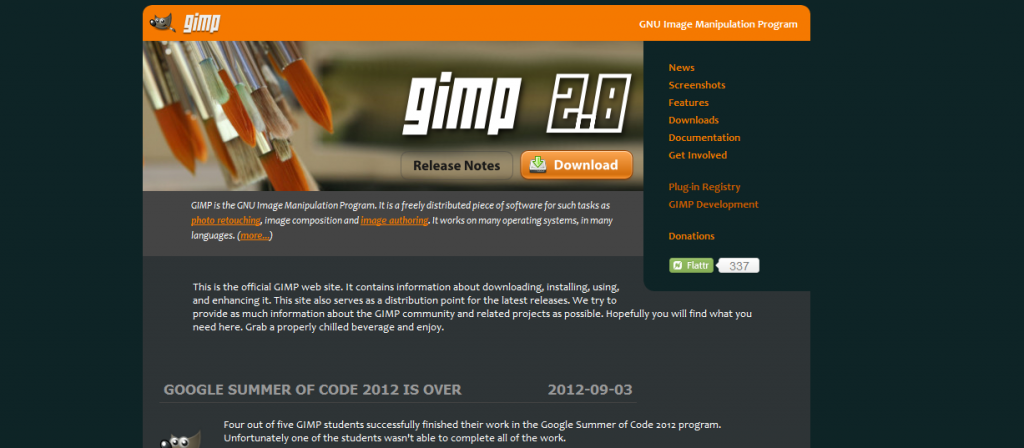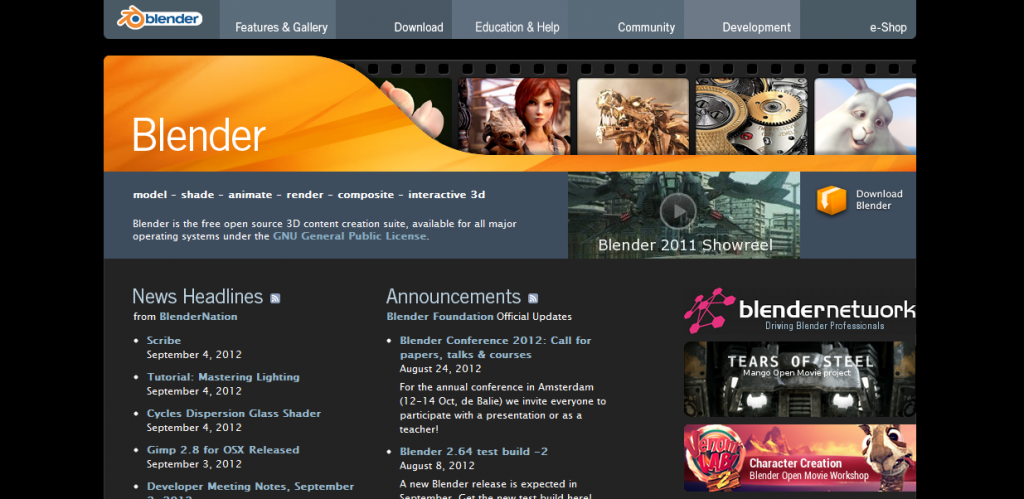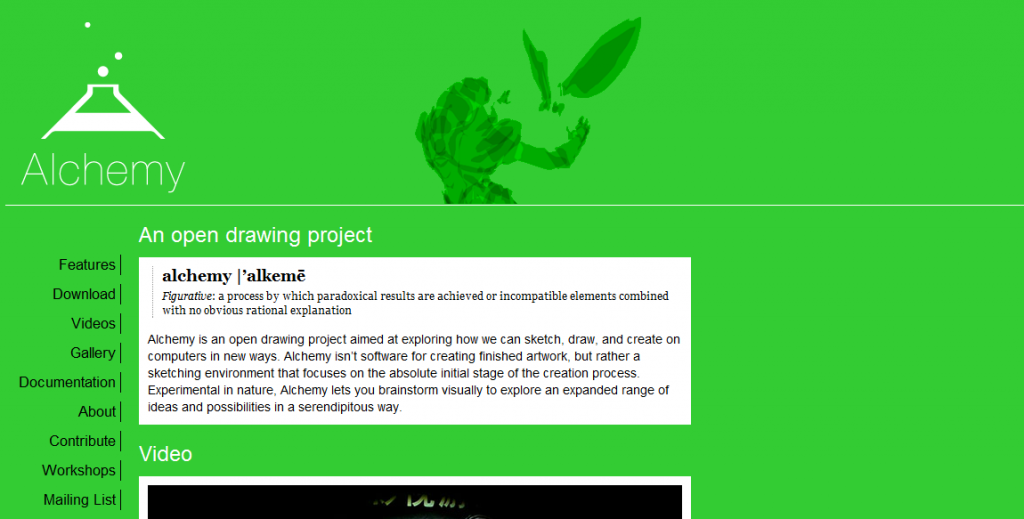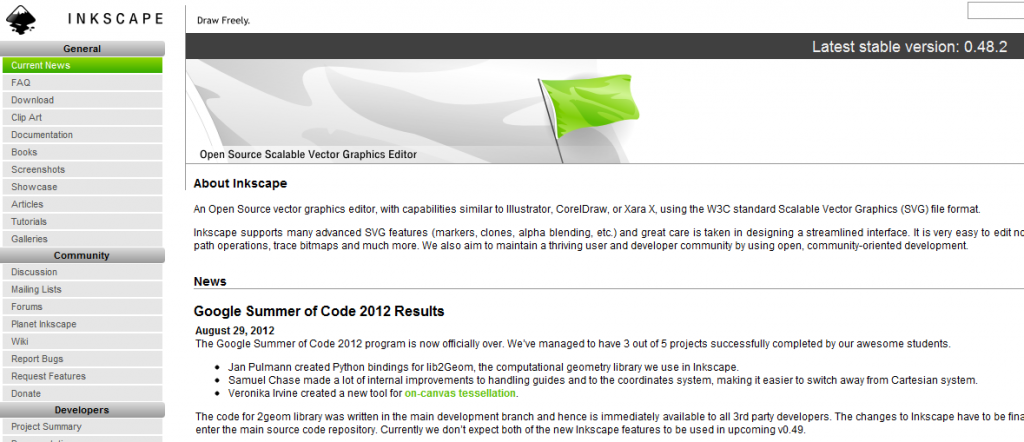Four Surprisingly Strong Free Design Programs
If you’re a graphic designer, you know that hard work and constant practice come with the territory. Talented new designers and industry veterans make for a highly competitive landscape. Design professionals often have to perform a budgetary balancing act between offering competitive rates, buying new hardware and software, and of course, paying their bills. When Apple comes out with improved hardware, or when Adobe enhances their design software, you may be thrilled with the new features, but you’re also faced with the obligation to keep your system up to date and challenged with the tough task of fitting these upgrades into your budget.
As a former film student who just graduated, I know firsthand that not everyone can afford the latest and greatest gadgets and toys. But, believe it or not, there are wonderful people out there who are designing programs that that have the same capabilities as expensive, name-brand design software, and the best part is that they are free. Whether you’re a student, hobbyist, or an aspiring graphic designer, you can surely save some of your money by checking out this short list of free graphic design applications.
Go Open Source with GIMP
GIMP (GNU Image Manipulation Program) is a free program geared for the likes of retouching and editing photos, GIMP is the equivalent of Photoshop with a few exceptions. The program may confuse a seasoned Photoshop user, but GIMP is easy to master once you get started. Available for Linux, Windows, and Mac, the program, though lacking certain fancy filter choices and tools, has a wide range of tools, filters, and effects.
I’ve mentioned retouching and editing, but GIMP also allows you to illustrate from scratch, and even grants the ability to create animations. Just like Photoshop, GIMP provides brush loading capabilities, including some Photoshop brushes. You can easily save your work in various formats, including bmp, gif, jpeg, mng, pcx, pdf, png, and even psd, to name a few. Experienced users will enjoy the advanced manipulation features that allow for extraction, image transformation, fractal creation, and the creation of polygonal and Bezier selections.
Not only only does GIMP give you the chance to bring your imagination to life and flex those creativity muscles, but you’re given almost the exact same capabilities found in expensive drawing/design software. For its zero-dollar price tag, GIMP is surprisingly robust, from its customizable interface to its 100+ readily available plugins that allow you to access new filters. So, if you’re looking for a free solution to Photoshop, I suggest you check out GIMP.
Build in Three Dimensions with Blender
Meet Blender, the poor man’s Autodesk Maya. But, trust me, there is nothing poor about this free cross-platform 3D creator. With a gorgeous, sleek, and fully-customizable interface that allows you to view your design from four different angles simultaneously, this 3D graphic software is just as powerful as its costly counterparts.
I was blown away by Blender’s many features. It has the ability to create 3D animated films, design characters, and generate renders and visual effects. This program is an absolute must-have for 3D artists.
I’ve picked this program up several times throughout the years for 3D design projects. Admittedly, it does take a while to master, but luckily the site provides excellent tutorials ranging from basic shape design to shading and character rigging. Blender’s real-time capabilities allow you to see your work immediately; whether you are sculpting or actually in the midst of creating a video game, you get to see results right away.
Blender’s powerful tools and intuitive interface make you wonder how such a solid program could be free. Blender also offers an online community for questions and feedback with a range of users from hobbyists to professionals. You’ll never feel like the odd man out in this community.
Since Blender does offer 2D and 3D creation and support, you are given multiple 2D and 3D import and export options, which include jpg, mov, png, 3D Studio, Nendo, and xfig. Blender works on both 32 and 64-bit operating systems of Linux, Windows, and Mac. If you have ever wanted to test your hand at 3D creation, Blender is the program for you.
Catalyze Creativity with Alchemy
Alchemy is a very different type of creative application. Unlike most software and programs, Alchemy isn’t geared to help you take a design from concept to completion. In other words, it is a free designing platform that has been built specifically to stimulate creativity via vector experimentation. It’s a digital sketchbook that allows you to solidify your design ideas and export them into the graphics program of your choice e.g. Photoshop or GIMP.
I am admittedly a fan of Alchemy, having used it for numerous projects. I can vouch that the program is very easy to learn. Though it might be a little off-putting to first-time users, Alchemy doesn’t offer you the ability to undo any mistakes, you can’t select anything, and you can’t edit. This is a true concept creation program that has one of the most simplified interfaces I have ever seen, which allows you to focus on your malleable concept instead of polishing the last few pixels of your finalized version.
The modules and features are what truly set this program apart from the others. One allows you to use your voice to control the length and width of a line or shape. There are various shapes that can be generated, including bones, type shapes, and “X” shapes, which you can use to create. If you are feeling really creative, you can draw “blind,” which is where the canvas display is turned off. You can even generate random shapes, which is a great way to break through “designer’s block” and generate some ideas for an abstract design project. These modules can be mixed and matched with the few basic effects (mirroring, gradation) that Alchemy offers.
Those looking for a way to expand their creativity and find a reliable method for productive brainstorming will love Alchemy.
Draw Freely with Inkscape
Inkscape is a completely free vector image editor and creator; it could be described as a smaller version of Adobe Illustrator. With a WYSIWYG interface that is similar to Illustrator, Inkscape is perfect for those who prefer vector image creation over bitmaps and pixels. Those who are in the business of logo design and scalable graphics come to mind.
The program carries similar features to those found in Illustrator, CorelDraw, and Xara. If you’re familiar with those products, then you will find yourself easily navigating the Inkscape menus and creating vector-based images in a matter of minutes. For those who aren’t familiar with the aforementioned products, you can always access Inkscape’s tutorial archive along with their galleries, books, and articles.
Like most vector creators, Inskcape uses the W3C standard SVG file format along with the usual jpg, png, and tiff file types. It also gives you the ability to export your finished works as png or several other vector-based file formats.
As expected in any design program, Inkscape lets you to create basic generic shapes and then lets you manipulate them via rotation and skewing. Node points and curve adjustments can be done precisely to create your image the exact way you envision it. With object creation, manipulation, the ability to style your object, text support, and rendering, Inkscape is a surprisingly strong vector contender, especially considering that it’s free.
Conclusion
The rise of free creative software offered under GNU licenses is making it easier for designers to find low-cost access to free tools. Whether you’re a student or hobbyist looking to hone your skills, or a veteran looking to stretch their budget, these free, readily available programs will surprise you with their ability to rival expensive software. There’s nothing to lose; I’d suggest you try them!
Have you found any other free design tools that are worthy of sharing? Given the difference in cost, how to you think that GIMP, Blender, Achemy, and Inkscape measure up to their expensive counterparts?







